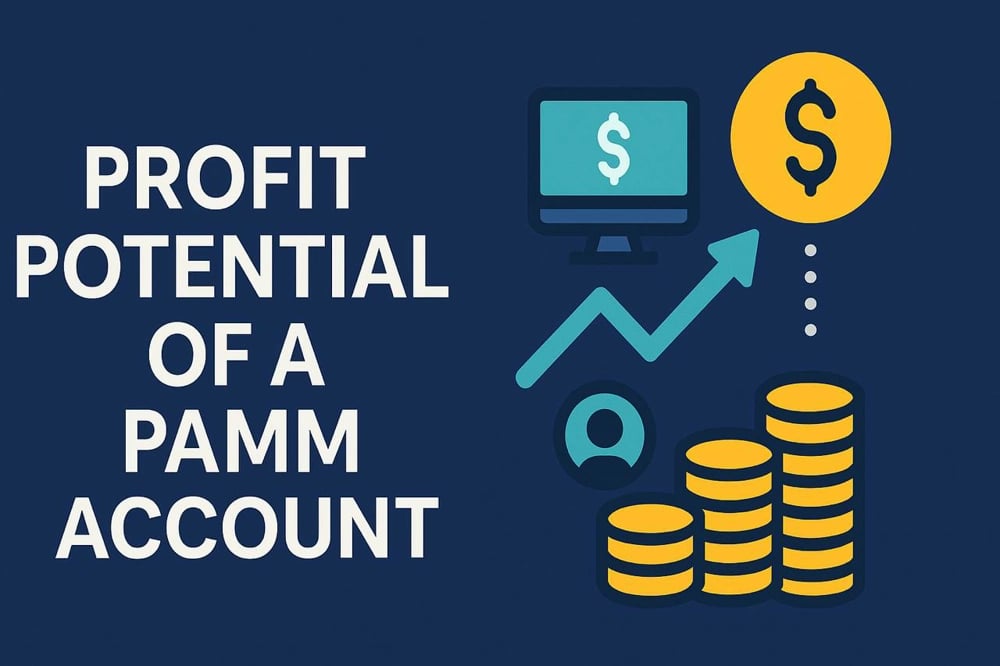Profit Potential of a PAMM Account
PAMM accounts offer an accessible way for investors to benefit from the skills of experienced traders. But what can one realistically expect in terms of profitability? In this article, we explore the profit dynamics of PAMM investment without the hype — focusing on realistic returns, performance variables, and how risk factors affect earning potential.
What Influences PAMM Profitability
Returns from PAMM investments depend on several key factors:
Manager's Trading Strategy: Aggressive strategies may yield higher returns but increase drawdown risk. Conservative strategies tend to show slower but more stable growth.
Market Conditions: Volatile or trending markets can offer more opportunities than range-bound environments.
Performance Fee Model: Most PAMM managers charge a performance fee (commonly 10–40%), which directly impacts investor profit.
Investment Horizon: Short-term investors may experience more volatility. Over longer periods, the effects of compounding can become more noticeable.
Real-World Scenarios
Let’s assume an investor allocates $2,000 to a PAMM manager who earns an average of 7% per month before fees. With a 30% performance fee, the net return would be approximately 4.9% monthly. Over a year, this could compound into a return exceeding 75% — assuming consistent performance and no withdrawals.
However, real trading conditions include losses, sideways markets, and external disruptions. Investors should temper expectations accordingly.
Compounding and Reinvestment
PAMM accounts compound naturally if the investor does not withdraw monthly profits. Some platforms offer automated compounding or allow manual reinvestment. Over time, reinvested earnings can significantly increase total return, even with moderate monthly gains.
Drawdowns and Profit Volatility
Even high-performing PAMM accounts experience drawdowns — temporary decreases in account equity. A typical drawdown range for balanced strategies may lie between 10–25%, though this varies widely.
Understanding drawdown risk is essential. It’s covered in detail in our related article: What Are the Risks of a PAMM Account?
For broader context on risk protection and transparency, see: Are PAMM Accounts Safe?
Choosing a High-Performing Manager
Performance history is a key indicator, but not the only one. When comparing PAMM accounts:
Check maximum drawdown
Analyze historical consistency (not just one good month)
Review risk-reward ratio
Read investor reviews and broker documentation
You can find a full guide to PAMM operations and structure in the article: What is PAMM investment and how does it work?
FAQ
What kind of profits can I expect from a PAMM account?
Returns vary widely, but balanced strategies often yield 4–8% monthly before fees. This depends on the manager, strategy, and market conditions.
Do PAMM accounts offer compounding?
Yes. Profits can be reinvested, allowing for compounding growth over time. Some platforms automate this process.
How do fees affect my earnings?
Performance fees, typically 10–40%, are deducted from gross profits. Always calculate net returns after these deductions.
Can I lose money with PAMM?
Yes. All trading involves risk. Be sure to understand drawdowns and volatility. See our article on PAMM account risks.
Where can I learn more about PAMM basics?
Refer to our beginner’s guide: What is PAMM in trading? and What is a PAMM account?









Comments
It reflects a broader shift toward sustainable growth through intelligent capital allocation